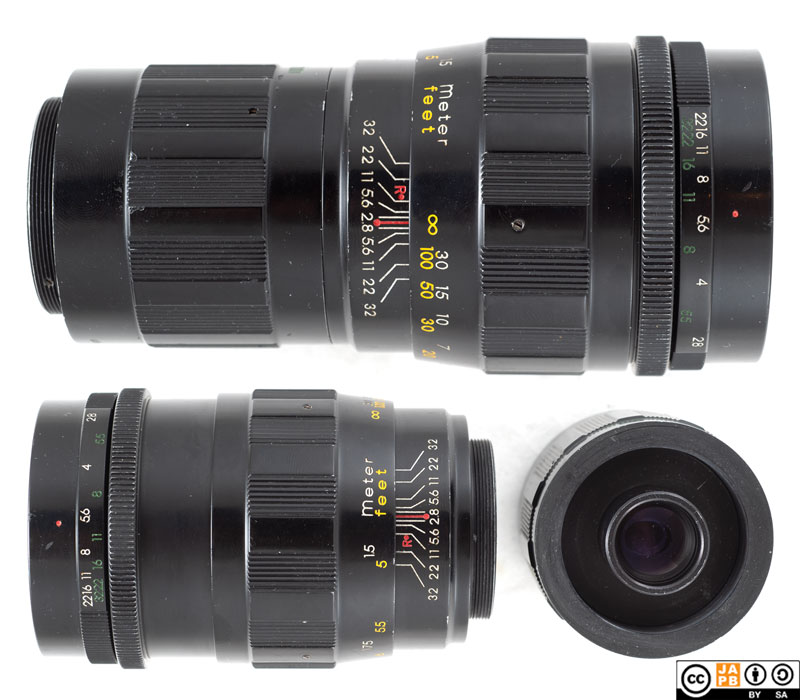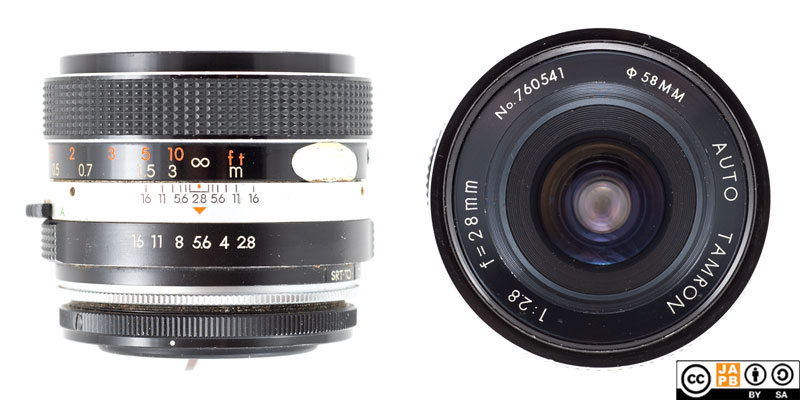Pekka Buttler, 10/2025
Taisei Optical Equipment Manufacturing / Tamron
Tamron’s roots trace to November 1950, when Fujio Watanabe and Takeyuki Arai founded Taisei Optical Equipment Manufacturing (Taisei Kōgaku Kiki Seisakusho 泰成光学機器製作所) in Urawa City1 to produce camera and binocular lenses. The brand name “Tamron” was registered in 1958, honoring Uhyoue Tamura, an optical designer who helped establish the company’s technical base. While the company has today entirely adopted the name ‘Tamron’, the name ‘Taisei’ kept being used on Tamron equipment for several years.
Among Tamron’s early successes were the 1959 introduction of the T-mount (an intermediate mount) as well as in 1961 being the second Japanese company (and among the first five worldwide) to launch a mass produced zoom lens2. Tamron’s early successes were widely copied by other Japanese optics companies.

The 70s and early 80s – Tamron’s first golden age
During the 1970s and 1980s, Tamron emerged as a central figure in Japan’s third-party lens boom. Tamron successfully competed with companies such as Cosina, Kiron, Komine, Mitake, Tokina – both as a manufacturer for lenses to be rebranded (by companies such as AIC, Porst, Revue and Vivitar) and as an independent third party lens maker, serving the expanding SLR market.

In this Tamron’s relative success was based on a combination of optical designs that offered tremendous bang/buck3, focusing on budget-friendly long tele lenses and zooms, and the widespread use of intermediate mounts that allowed the use of the same lens on several camera systems.
Tamron replaced the T/T2 mount in 1969 with the Tamron Adapt-a-matic intermediate mount, which was in turn replaced in 1973 by the Tamron Adaptall intermediate mount. The Adaptall mount was finally in 1980 upgraded to the Adaptall-2 mount, that – on some camera systems – even supported program-type exposure automation.
The end of the 70s saw a trend emerge in the Japanese camera/optics industry, that can best be described as a thinning of the herd, with many camera and lens makers quitting the increasingly competitive business. Among the ‘casualties’ of this market reorientation were several (previously) big names, including Sankyo Kohki (Komura lenses), Miranda (Bankrupt 1976), Petri camera (bankruptcy 1977), Topcon (exit from the camera business 1978).
Tamron’s response was to shift upmarket with its launch of the SP (super performance) line of lenses in 1979, and a stronger emphasis of selling quality products under its own brand. In effect Tamron tried to place themselves somewhere in the wide gap between the product offerings of the main brands (premium camera&lens makers such as Canon, Minolta, Nikon, …) and the mass of lens makers who mostly sold their lenses to rebranders.
While this strategy succeeded in the sense that Tamron survived the thinning and even gained considerable name recognition, the introduction of autofocus SLRs posed a double challenge. First, the proliferation of wildly differing proprietary AF lens mounts meant that the era of intermediate mounts was at an end. For Tamron this meant that it was again forced to make dedicated lenses for each mount that they intended to serve. Second, the age of autofocus and electronic communication between lens and camera also made it so that camera makers could make their systems somewhat closed to outside lens makers. This further weakened Tamron’s competitive position, and for much of the pre-digital autofocus era (ca 1985–2005) Tamron was a relatively obscure minor player in the consumer lens business (while simultaneously diversifying into other related businesses).
Modern era
Tamron is today more than a just a manufacturer of interchangeable photographic lenses, all Tamron’s contemporary business areas4 are related to optics and imaging. Tamron’s strong focus on optics is likely a key factor why Tamron has managed to stay afloat even at the same time as the still photography industry first went through the autofocus revolution, then through the shift to digital, and the subsequent cannibalisation of the camera market by smartphones.
Indeed, Tamron is among only of handful Japanese third party lens manufacturers that have managed to remain in the business. Tamron is today among the most highly respected third party lens manufacturers and Tamron offers competitive products in many still photography lens segments ranging from primes and macro lenses to every type of zoom from the ultra-wide to the ultra-tele.
Back to the listing of all JAPB company profiles
Footnotes
- Tamron’s original plant was in Urawa (浦和市) (today part of Saitama City), but it moved to a new plant in Hasunuma, Ōmiya (大宮市蓮沼) (today also part of Saitama City). ↩︎
- This would be the Tamron 95-205 mm f/6.3 zoom. ↩︎
- One well-known example is the 90 mm f/2.5 macro lens, which gained cult status for optical excellence ↩︎
- Including: industrial and surveillance optics, automotive and robotics imaging, and machine vision products ↩︎